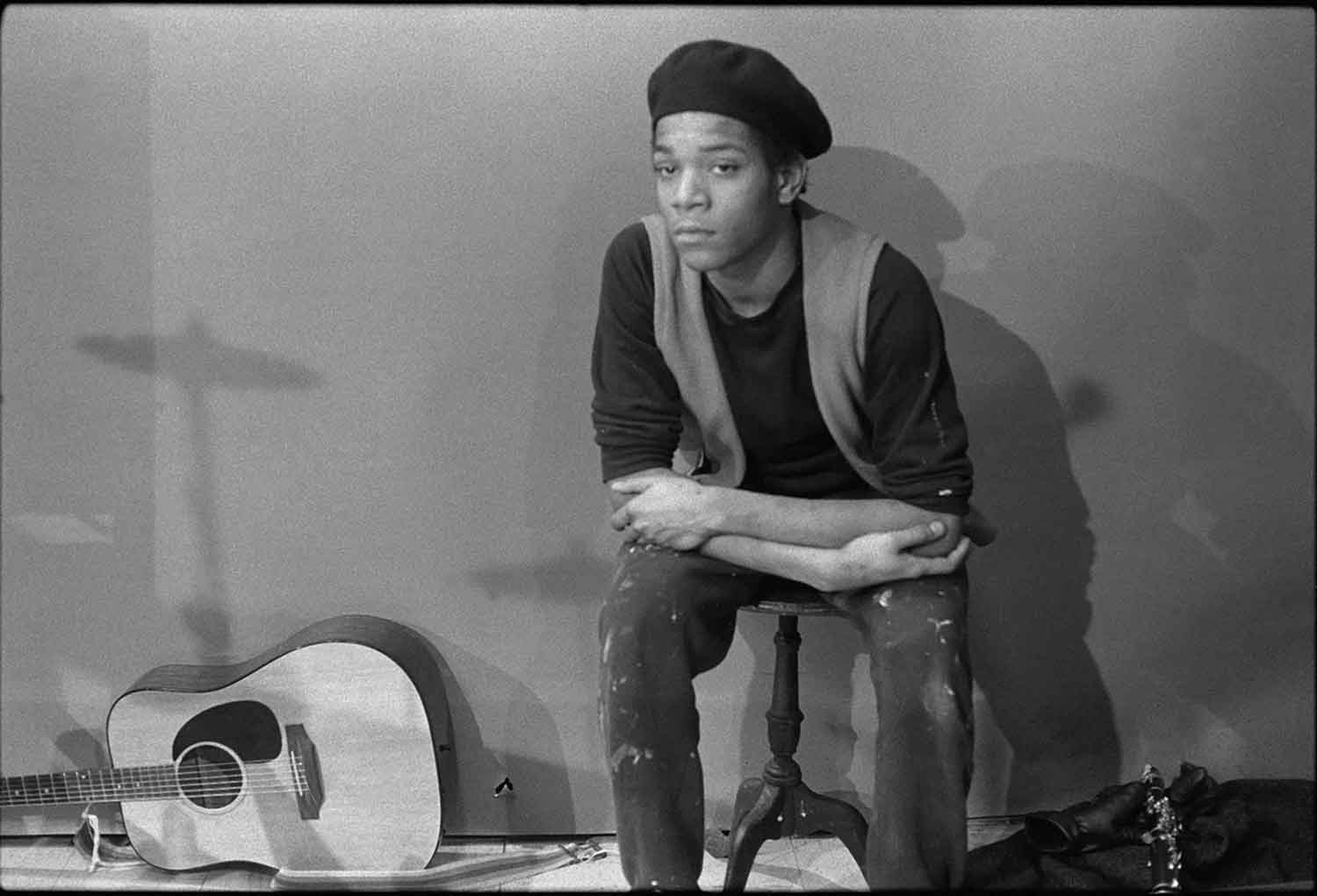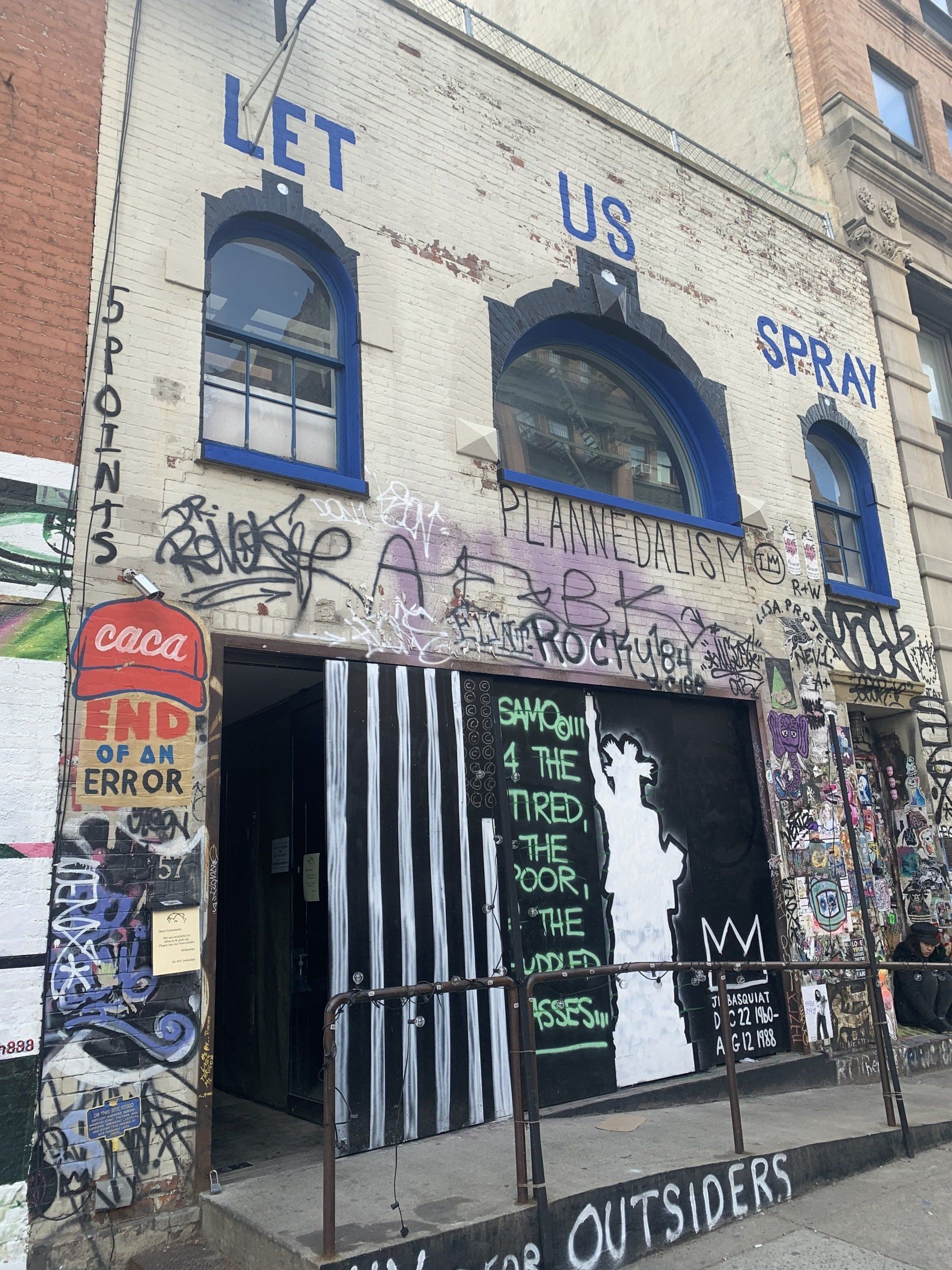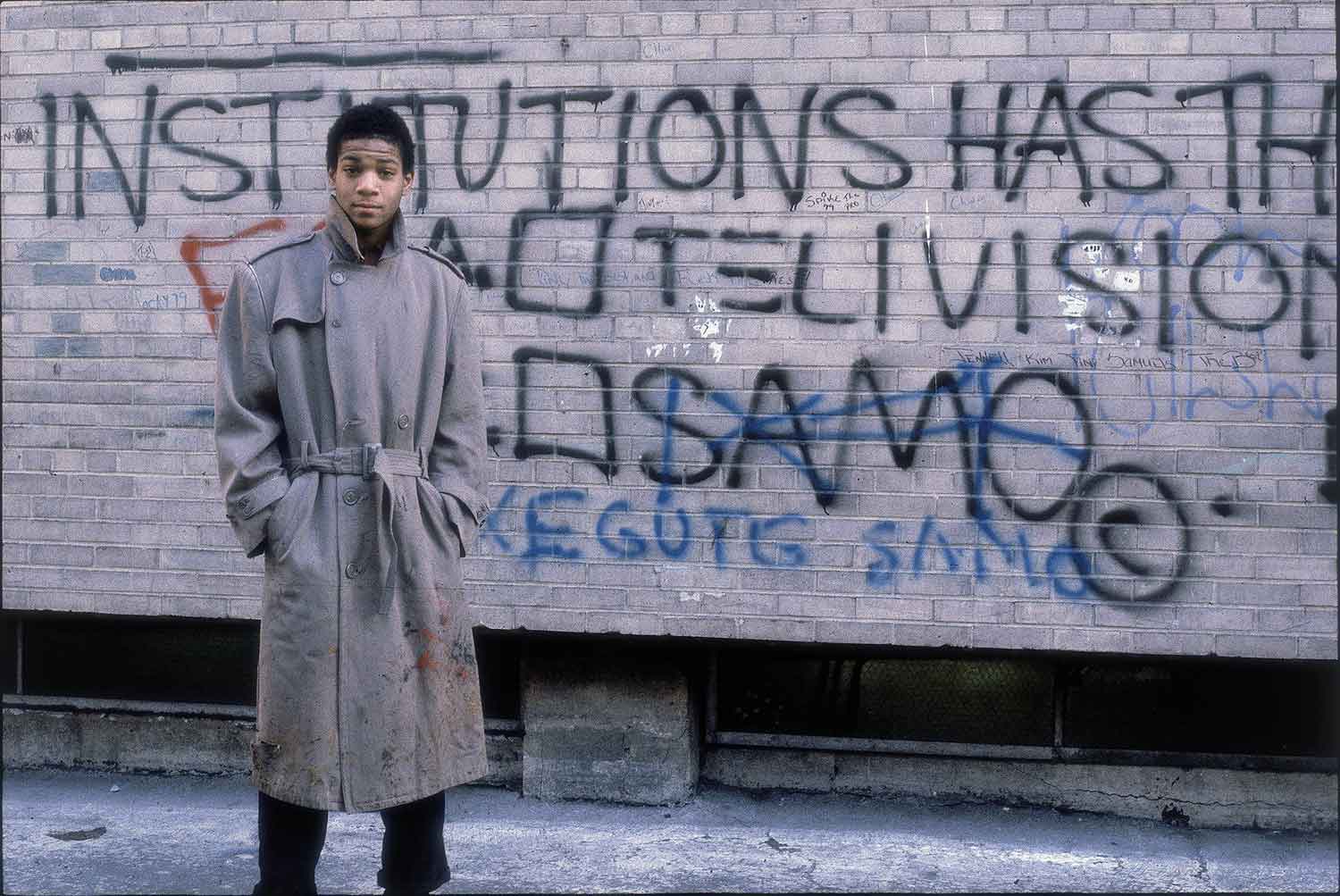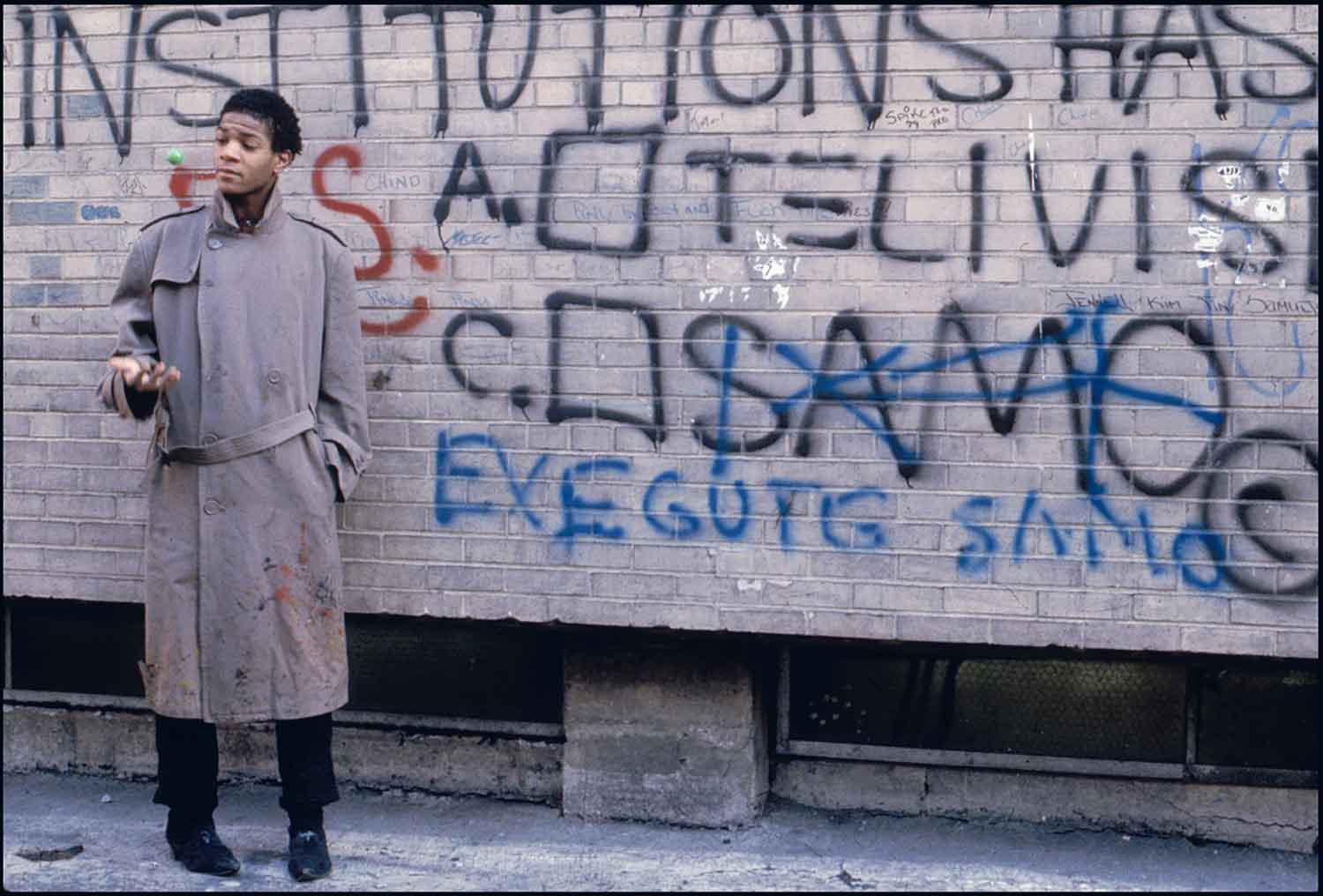Brilliantly Original
Jean-Michel Basquiat (1960-1988) was one of the most brilliantly original and important artists of the twentieth century. His meteoric rise to fame – the journey from a little-known graffiti tagger on the streets of New York to a celebrated artist with works in international galleries and collectors’ homes – took less than five years. Basquiat’s entire mature career spanned just one decade, tragically ending with an overdose before his 28th birthday, yet the power of his work and its broad influence are just beginning to be understood.
Basquiat was born in Brooklyn to Gerard Basquiat, a successful Haitian immigrant from Port-au-Prince, and Matilde Andradas Basquiat, a woman of Puerto Rican parentage. His multi-lingual and multi-cultural heritage, and position as an outsider, strongly influenced his artistic and personal growth.
As a young museum attendee with his mother, Basquiat visited The Brooklyn Museum, The Museum of Modern Art and The Metropolitan Museum of Art. He was later self-educated in the history of art, particularly the work of Pablo Picasso, Robert Rauschenberg, and Cy Twombly. Deeply interested in his Afro-Caribbean cultural roots, he also explored mythology, religion, and African cultures, as well as the political apparatus and capitalist practices of American society. Basquiat watched a constant stream of television, film, and animated cartoons and read a broad range of non-fiction books and comics. Significantly inspired by music and its creators, he immersed himself in blues, jazz and nascent hip-hop, sourcing far-reaching and varied references later embedded in his work.
-
Outside Jean-Michel Basquiat's former studio, 57 Great Jones Street, Photo, Janis Gardner Cecil
Button
Influenced by the energy and imagery of the New York City streets, Basquiat embraced icons of popular consumer culture and music as appropriate subjects for art, choosing those with more sociopolitical subtexts in an astute and pointed blend of high and low references. Basquiat saw in popular cartoons and consumer items a reflection of society’s institutionalism of racism, discrimination, and the inherent inequality of American culture. As art historian Richard Marshall remarked, Basquiat’s paintings “reveal a confluence of his many interests and energies, and their actual contents – the words – describe the subjects of importance” to the artist. “He continually selected and injected into his works words which held charged references and meanings – particularly to his deep rooted concerns about race, human rights, the creation of power and wealth…”(Jean-Michel Basquiat, Whitney Museum, 1992, p. 21).
Basquiat was known as a graffiti artist from 1977 to 1979 with Al Diaz under the pseudonym SAMO© before switching to painting in the following years. During this formative period, Basquiat sought out the urban discards of New York City – disused windows, doors, pieces of metal and wood – as supports for words and images that flowed without cessation. In 1980-1981, Basquiat starred in a short film, Downtown 81 (originally titled New York Beat) directed by Edo Bertoglio and written by Glenn O’Brien. This work was a rare snapshot of the artistic subculture of lower Manhattan and featured key scenes of an almost balletic Basquiat spray paintings walls with a uniquely poetic and cryptic language.
By 1982, Basquiat was to become an art star for a new era, working in SoHo with gallerist Annina Nosei and featured in international shows, the limelight of critics and collectors upon him.
One could argue that his gift to Randy Gun of Harry’s ABC of Mixing Cocktails in 1986 is made at the apex of his career – his work was in exhibitions in six countries on four continents that year – yet the ravages of his heroin use were visible to most. It is with deep appreciation for Basquiat’s genius, and sadness at his death, that we explore this extraordinary and generous gift to Randy Gun.
Jean-Michel Basquiat, Winter 1980-81, during the filming of Downtown 81.
Downtown 81, originally titled New York Beat, is an American film that stars Jean-Michel Basquiat, written and produced by Glenn O'Brien. Directed by Edo Bertoglio in 1980-1981, the movie captures the post-punk artistic subculture of gritty lower Manhattan and features performances by a range of artists and bands in O’Brien’s cultural milieu. The film was finally released in 2000 to much acclaim, with post-production by O’Brien and Maripol. East Village artists include James Chance, Amos Poe, Walter Steding, Tav Falco and Elliott Murphy, among others. The soundtrack features music by Jean-Michel Basquiat with Andy Hernandez; Basquiat's own band, Gray; John Lurie and the Lounge Lizards, DNA, Tuxedomoon, the Plastics, Marvin Pontiac, Kenny Burrell, the Specials, Chris Stein, Melle Mel with Blondie, Liquid Liquid, Kid Creole and the Coconuts, James White and the Blacks, Vincent Gallo, Lydia Lunch, Steve French and Suicide.
On a day off from filming, Bobby Grossman and Jean-Michel Basquiat met for lunch at the popular downtown restaurant, Kiev, before a photo shoot together at Mulberry and Bleeker Street in front of Basquiat’s SAMO© graffiti. Grossman attended most days of the film shoot, creating many iconic images of Basquiat on set. He also photographed the party on the last day of filming at the Mudd Club, capturing relaxed moments with the artist.
Janis Gardner Cecil








